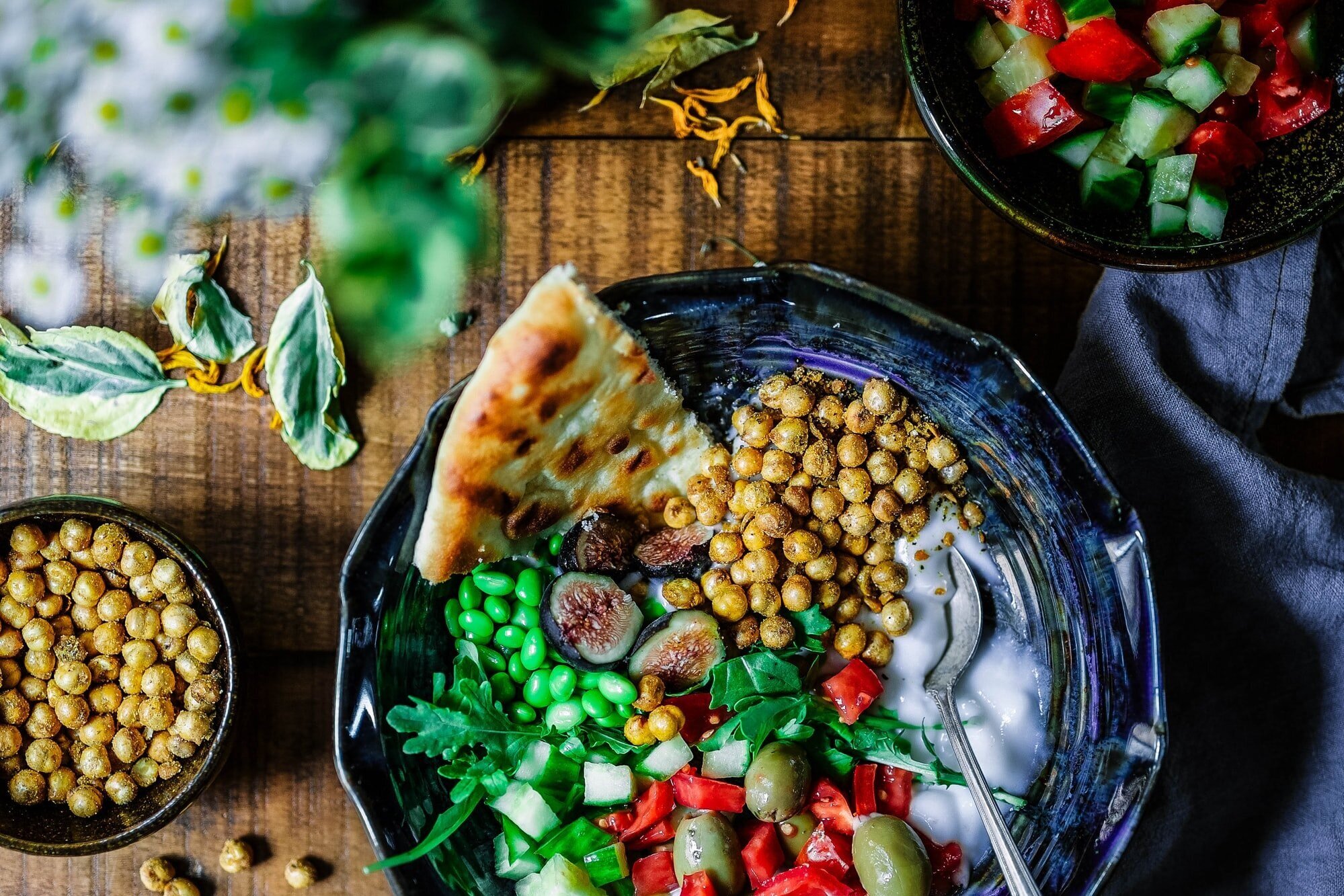Anti-inflammatory eating pattern.
“THE FOOD YOU EAT CAN BE EITHER THE SAFEST AND MOST POWERFUL FORM OF MEDICINE OR THE SLOWEST FORM OF POISON.”
How we eat plays a large role in how well we function. We get vitamins, minerals, phytochemicals, and energy from food, that enable our bodies to do what they’re meant to. Food helps build muscle, strengthen bones, and boost our immune system. Food can also drive inflammation, impair gut health, impact thought processes, and impair sleep.
Research indicates that bodily inflammation, even unseen, can drive chronic disease and ill health.
An anti-inflammatory diet is a great starting point in helping to improve energy, health, and wellbeing whilst decreasing inflammation within the body.
DIET OR STYLE OF EATING?
This is a style of eating, rather than a diet, that favours fruits and vegetables, foods that have omega-3 fatty acids, whole grains, protein, healthy fats, spices, and a moderate amount of red meat. Processed foods are discouraged as they can be a trigger of inflammation.
It aims to set a strong foundation of healthy eating that’s rich in immune-boosting, inflammatory-lowering antioxidants, and high in omega-3 fatty acids. All of which will help your body get back in balance. It can be tweaked, fine-tuned, and modified to suit your individual needs and requirements.
Noticing what you are choosing to eat and your serving sizes is a great place to start.
BENEFITS OF AN ANTI-INFLAMMATORY WAY OF EATING…
Consistent energy
Healthy, regular bowel movements and digestion
Sound, restful sleep
Healthy, balanced weight and body composition
Smooth, glowing skin
Balanced hormones
Positive mood with greater capacity to manage stress
SIMPLE CHANGES
Simple changes in food choices, and how much you eat can help counteract chronic inflammation, a root cause of many serious diseases, including:
Heart disease
Alzheimer’s and Parkinson’s diseases
Age-related disorders, including many cancers
Autoimmune diseases such as rheumatoid arthritis and lupus.
What Foods then?
As mentioned above, an anti-inflammatory diet focuses on foods that can help reduce inflammation in the body. Chronic inflammation has been linked to various health issues like heart disease, diabetes, and arthritis, so incorporating anti-inflammatory foods may be beneficial.
Here's a general list of foods that are often considered part of an anti-inflammatory diet:
Fruits: Berries (blueberries, strawberries, raspberries), cherries, oranges, and other fruits rich in vitamin C.
Vegetables: Leafy greens (spinach, kale, collard greens), broccoli, Brussels sprouts, cauliflower, peppers, and tomatoes.
Healthy Fats: Avocado, olive oil, nuts (almonds, walnuts), seeds (flaxseeds, chia seeds), and fatty fish (salmon, mackerel, sardines) high in omega-3 fatty acids.
Whole Grains: Brown rice, quinoa, whole oats, whole grain bread, and pasta.
Legumes: Beans (black beans, chickpeas, lentils), peas, and soybeans.
Herbs and Spices: Turmeric, ginger, garlic, cinnamon, and other herbs/spices known for their anti-inflammatory properties.
Tea: Green tea and herbal teas like chamomile or ginger tea, have antioxidants and anti-inflammatory compounds.
Probiotics: Yogurt, kefir, kimchi, sauerkraut, and other fermented foods that support gut health.
Dark Chocolate: High-quality dark chocolate with a high cocoa content (70% or more) can have anti-inflammatory effects.
A good rule is to choose all the colours of the rainbow when choosing fruit and vegetables. The more colour, the more antioxidant-rich, and anti-inflammatory properties.
It's also important to limit or avoid foods that may contribute to inflammation:
Processed Foods: High in refined sugars, unhealthy fats, and additives.
Trans Fats: Found in fried foods, baked goods, and some margarine.
Excessive Red Meat: Limit consumption of red meat and opt for leaner cuts.
Refined Carbohydrates: White bread, pastries, and sugary drinks.
Excessive Alcohol: Heavy alcohol consumption can contribute to inflammation. In moderation, red wine contains antioxidants like resveratrol that may have anti-inflammatory properties.
Remember, individual responses to foods can vary, so it's essential to pay attention to how your body reacts to different foods and adjust your diet accordingly. Consulting with a nutritionist can provide personalized guidance based on your specific health needs and goals.
BUILDING AN ANTI-INFLAMMATORY PLATE
A Healthy Plate is a simple and effective aid for healthy nutrition. It reflects modern scientific knowledge, showing the best way to maintain a healthy body, and healthy weight while creating a foundation for illness prevention, and supporting effective treatments.
Adhering to the recommended serving sizes along with observing the healthy plate, will also help to make sure that you are getting the full amount of nutrients required for a healthy mind and body.
WHAT DOES 1 SERVING SIZE LOOK LIKE
Veggies and Legumes: approximately 75 gm = ½ cup cooked green or orange vegetables, ½ cup cooked dried or canned beans, peas or lentils.. etc
Fruit: 150 gm = 1 medium apple, banana, orange, or pear, 2 small apricots, kiwi fruits, or plums.
Protein: Animal = 1 palm-size when cooked OR 170g or ¾ cup of tofu OR 1 cup of cooked lentils, beans, or other legumes or 2 x large eggs.
Wholegrains: 1 slice of bread – choose wholegrain or sourdough varieties OR ½ cup cooked rice, pasta, noodles, barley, buckwheat, quinoa, millet OR ½ cup cooked porridge or ¼ cup muesli.
For more information, visit https://www.eatforhealth.gov.au/food-essentials/how-much-do-we-need-each-day/serve-sizes

